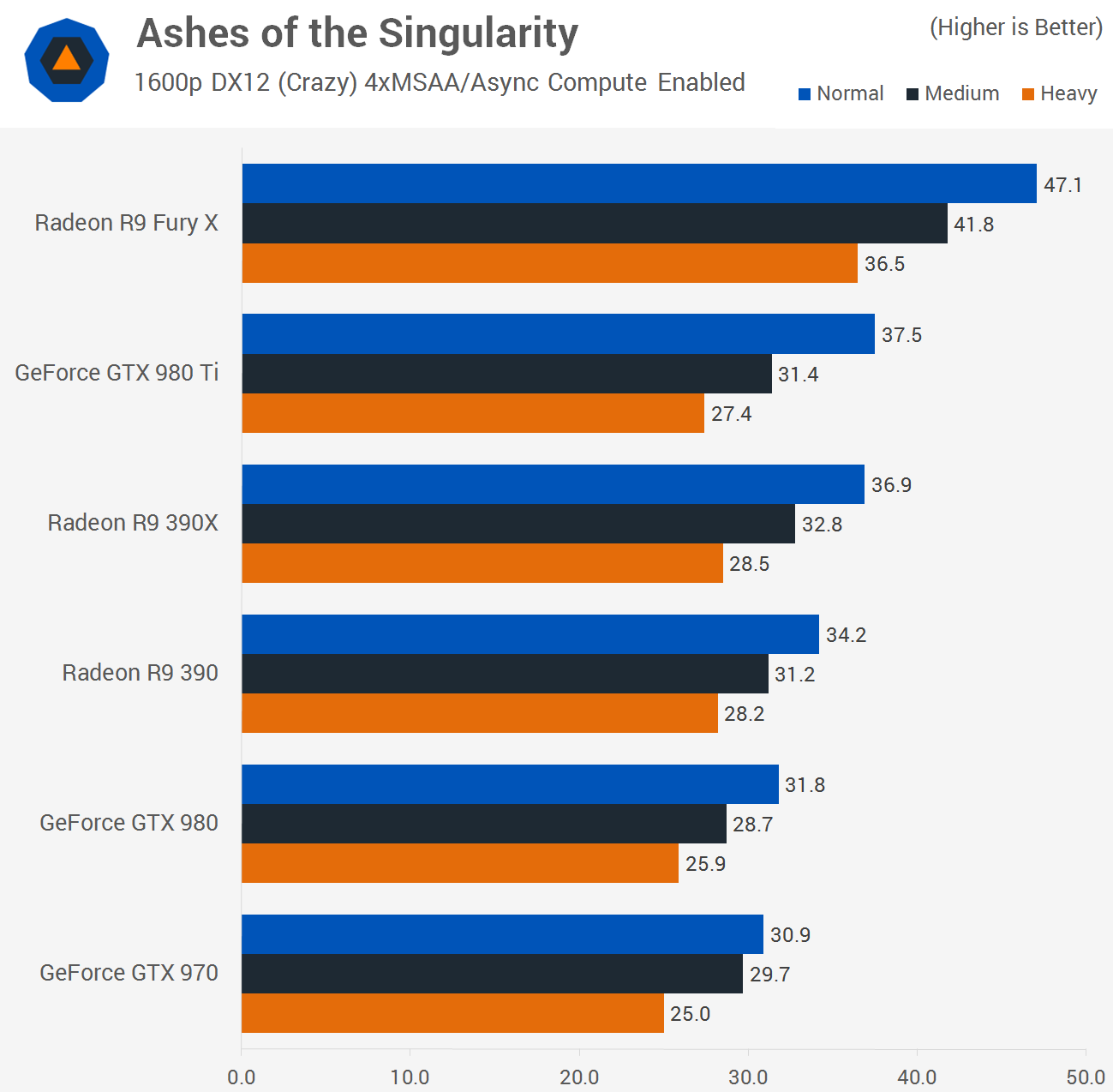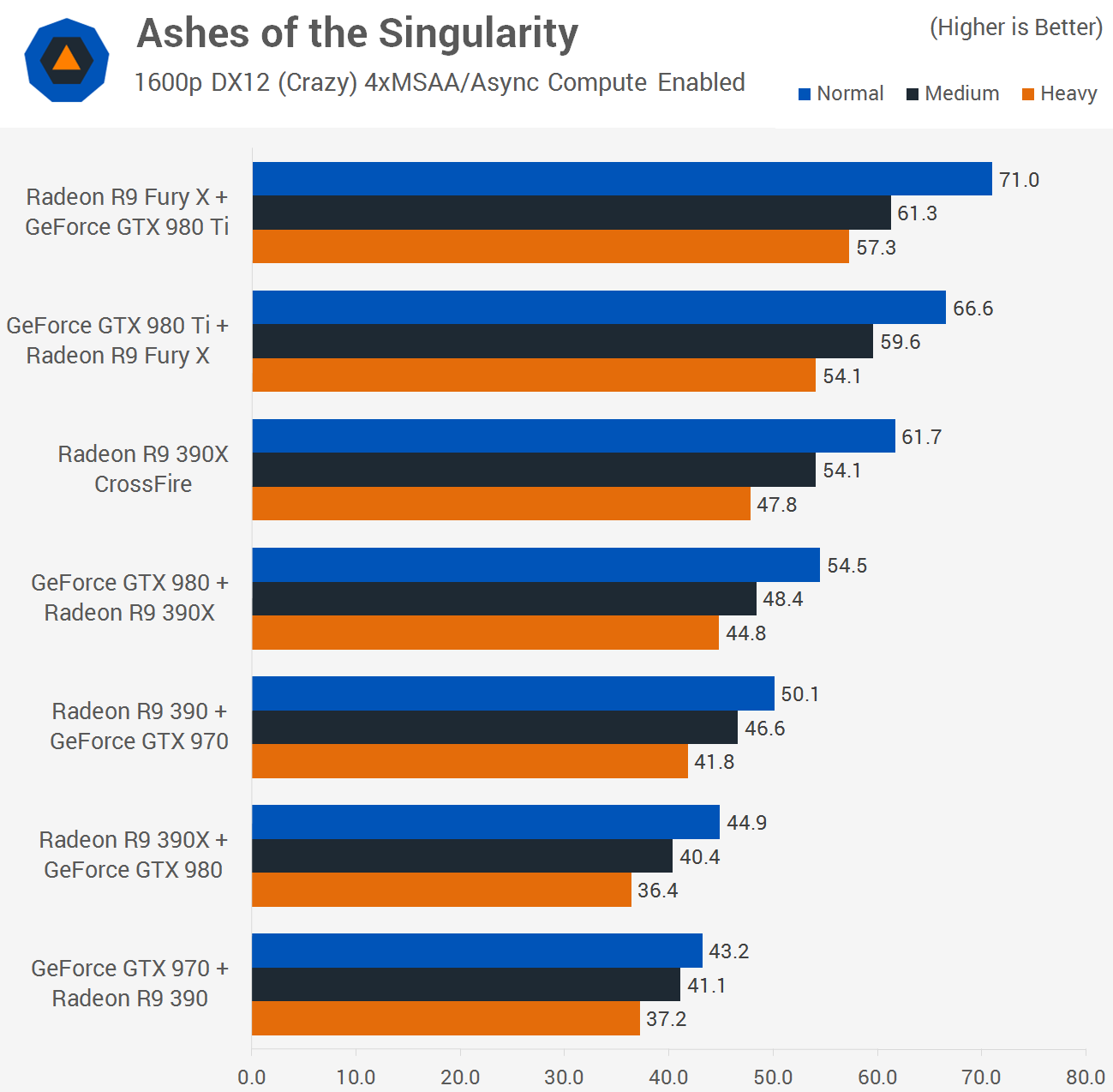Benchmarks: 1600p Single & Multi-GPU Results

Before we jump to the mixed GPU results let's just focus on some single GPU numbers to get our bearings first. It's interesting to note that the GTX 970 and GTX 980 delivered virtually the same performance and never were a great deal slower than the GTX 980 Ti, especially in the heavy and medium tests.
This meant that although the GTX 970 wasn't a great deal slower than the R9 390, the GTX 980 looked weak compared to the 390X. The 980 Ti was also burned by the Fury X, which was over 30% faster in the heavy test.
Later we'll run similar tests with async compute disabled to see what kind of impact this technology has on the Nvidia cards.

The above graph is a preview of what's to come. Without single GPU results it's hard to gauge what kind of performance enhancements we are seeing. Nevertheless, it might take some time to process the fact that we have GeForce and Radeon graphics cards side by side, so let this be an ice breaker ;).
There are a few things that become immediately apparent from these results. Firstly, as we saw in the single GPU tests AMD is comfortable outperforming Nvidia in this title and as a result you will receive the strongest results when using a Radeon graphics card as the primary adapter.
The Fury X and 980 Ti combo for example was 7% faster when using the R9 Fury X as the primary card.
Because AMD is faster than Nvidia here a pair of R9 390Xs were much faster than the R9 390X and GTX 980 combo, despite the 980 being the more powerful solution in over 90% of DX11 titles.
